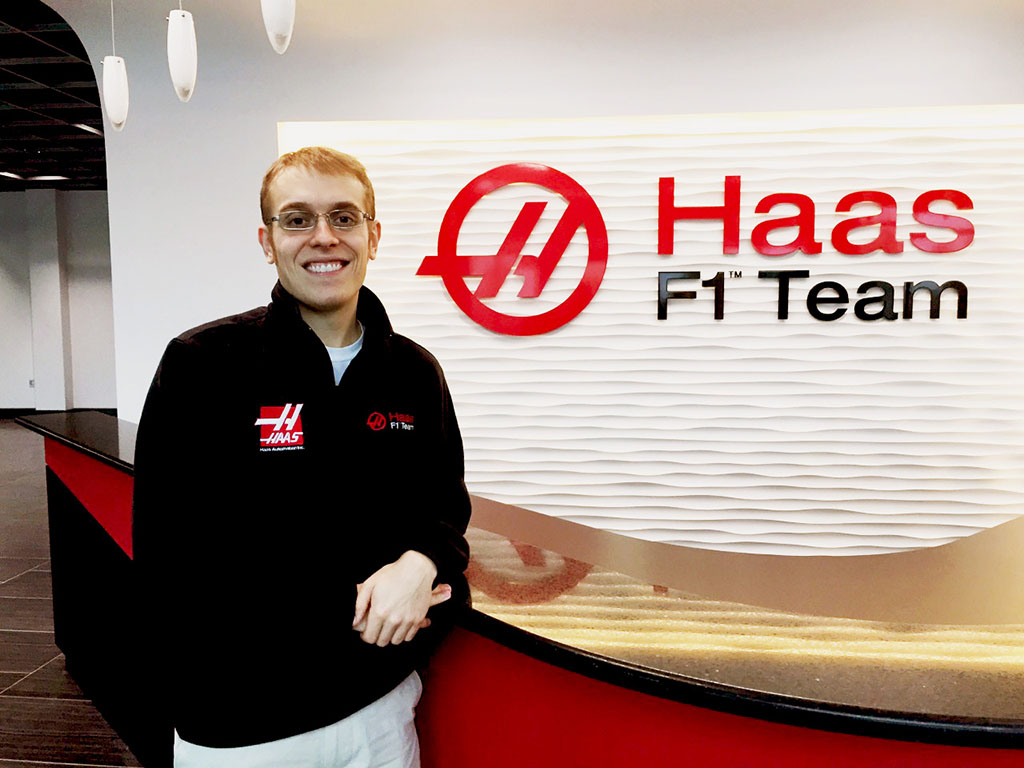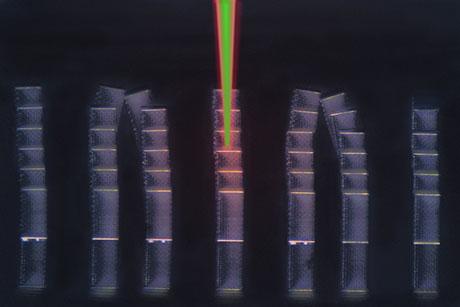Alumni Spotlight: Thomas Ober, SM ‘10, PhD ‘13
The (Fluid) Dynamics of Motorsports
Thomas Ober (SM ‘10, PhD ’13) was a post-doctoral associate at Harvard University when the application of Gene Haas, founder of Haas Automation and co-owner of the Stewart-Haas NASCAR racing team, was accepted into the Formula 1 championship with his newly created Haas Formula 1 racing team.
A motorsports fan in high school and a member of the FSAE team at Cornell University, Ober has always been interested in racing. In fact, during his time as a PhD candidate with Professor Gareth McKinley’s group, Ober had interned at Lotus Renault GP, another Formula 1 team in the United Kingdom, working in their aerodynamics department. So when he came across a job opening for a computational fluid dynamics engineer at Haas Formula 1 during his job search, it quickly rose to the top of his list.
He got the job.
As a computational fluid dynamics engineer on a racing team, Ober combines his physical knowledge with computer software to analyze the flow field around the race car to improve downforce and reduce drag. The Reynolds numbers he’s working with now are much higher than when he was studying viscous fluid flows in MechE’s Hatsopoulos Microfluidics Lab, but, he says, “The overarching fluid mechanics concepts I learned throughout my master’s and PhD coursework relates very well to what I’m doing now, even though it’s not directly related to what I was doing with my PhD.”
In a lot of ways, says Ober, the startup atmosphere of the Haas Formula 1 racing team is very similar to working in a research group: It’s a small, passionate team working together closely to solve a particular set of problems.
“In a research group, everyone is an expert in their own sub-area,” says Ober, “and you get the chance to learn from everyone else as a result. Because the Haas F1 team is a startup, I’m getting that same type of experience here. I work in a fairly small group of eight or 10 engineers. We are all working on our own small projects, but at the end of the day, we’re using the same types of tools and helping each other develop new solutions and learn more about the performance of our car.”
Since Haas Formula 1 is a brand new team, they haven’t yet built any cars and in fact aren’t even officially racing for the first time until later in 2016. It is also the only United States-based racing team in Formula 1. All of which provides Ober with a pretty unique opportunity.
“Every team makes a new car every year, but for us it’s different, because it’s all so brand new. We’ve haven’t built a car at all yet. It’s going to be really neat to see this car roll out, representing not just Haas Automation but also on many levels the United States as a global player in the motorsports field.”
Designing a race car, he says, is at once both an innovative and iterative process, one that requires engineers to incrementally improve their car each race to keep up with their competitors but also to outfox them in a groundbreaking way to speed ahead.
“Right now, as we develop our first car,” says Ober, “we’ve really been looking at all areas of possibility because we’re designing from scratch. Historically, as a season moves on and you start to see all the designs of the other teams, you notice the areas of the car that teams are focusing on and try to keep up.
“On the other hand,” he continues, “if you want to get ahead of the grid, you have to innovate. I think a lot of that is organic. You try a few things that you think are going to work and find it doesn’t do at all what you wanted – but you discover something new that might have an application for another part of the car. So you have a direction, but a lot of the big successes you have are kind of by accident. Quite a bit like research, in a way.”
In terms of timing, though, race car engineering is a far cry from research. Between each race, the engineering teams have to conduct analysis on previous races and develop, in a few weeks’ time, an incremental technical advancement to improve the car for the next race. They don’t have time to explore all the possibilities as thoroughly as they’d like and yet have to uncover the best possible options in the shortest amount of time.
“We are in a much more short-term-application, goal-driven kind of environment than a typical academic setting, where you could have a project that goes on for many years and ultimately leads to a single publication,” says Ober.
“In my new environment, the time frames are about two weeks to a month, at most. And then at that point, you have to move on to the next thing.”
Personally, Ober has no intentions of moving onto the next thing any time soon. He’s quite content working his dream job.


